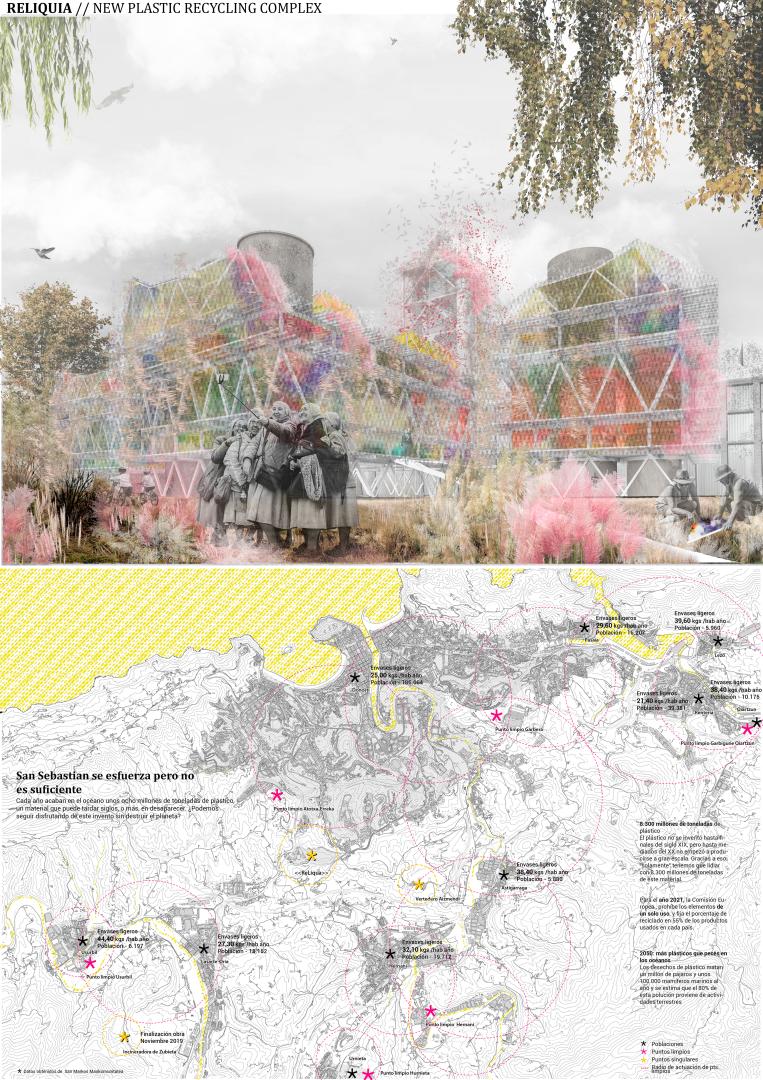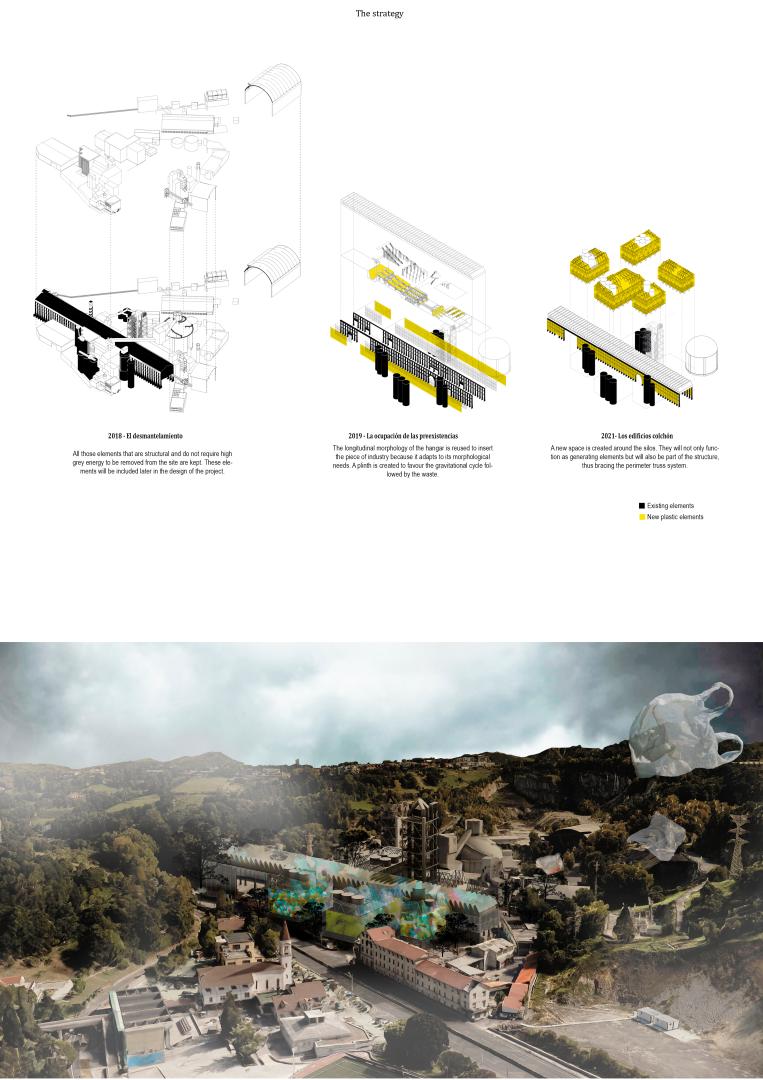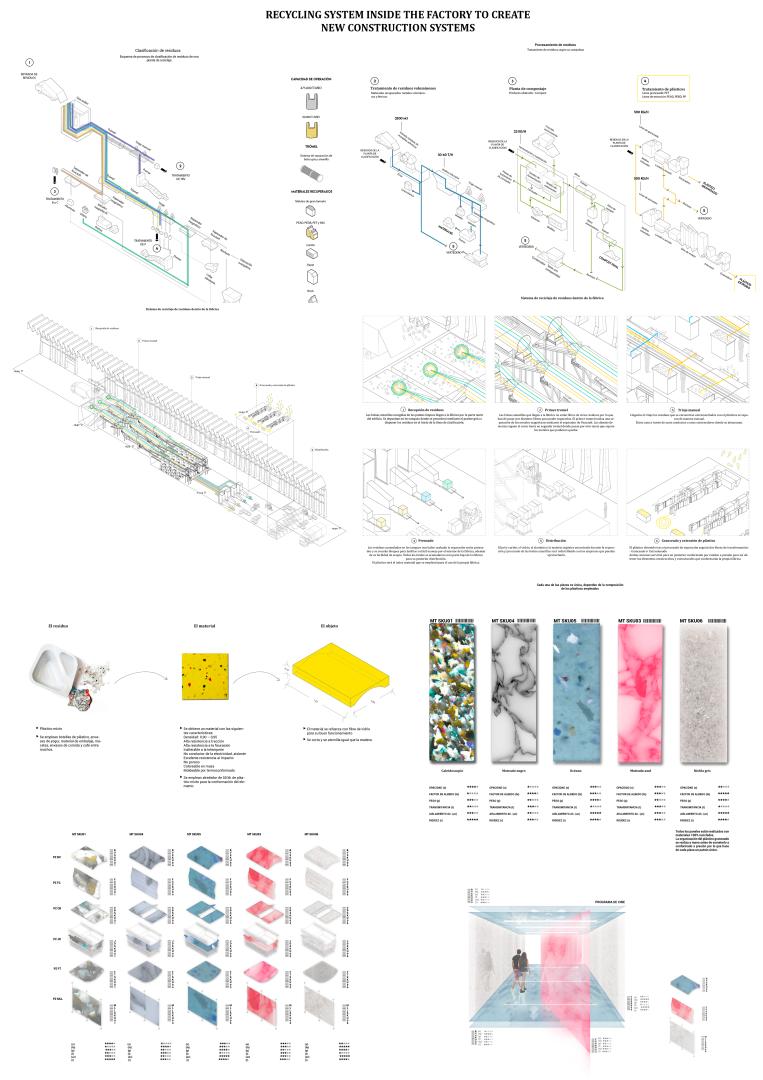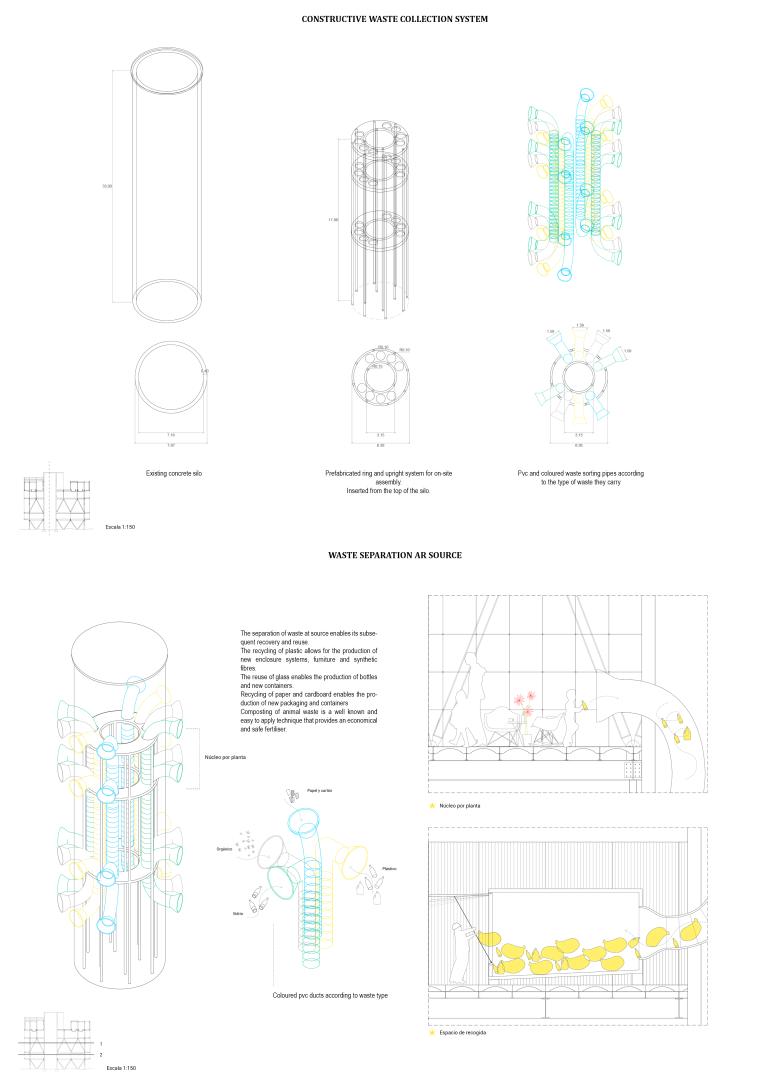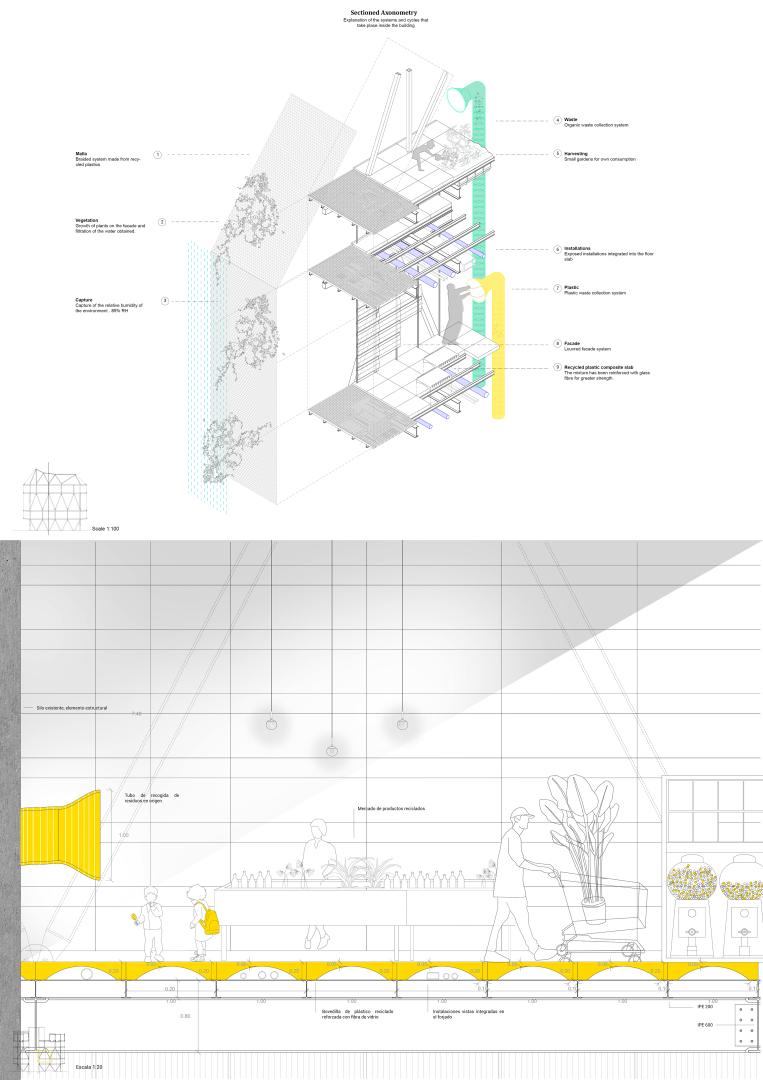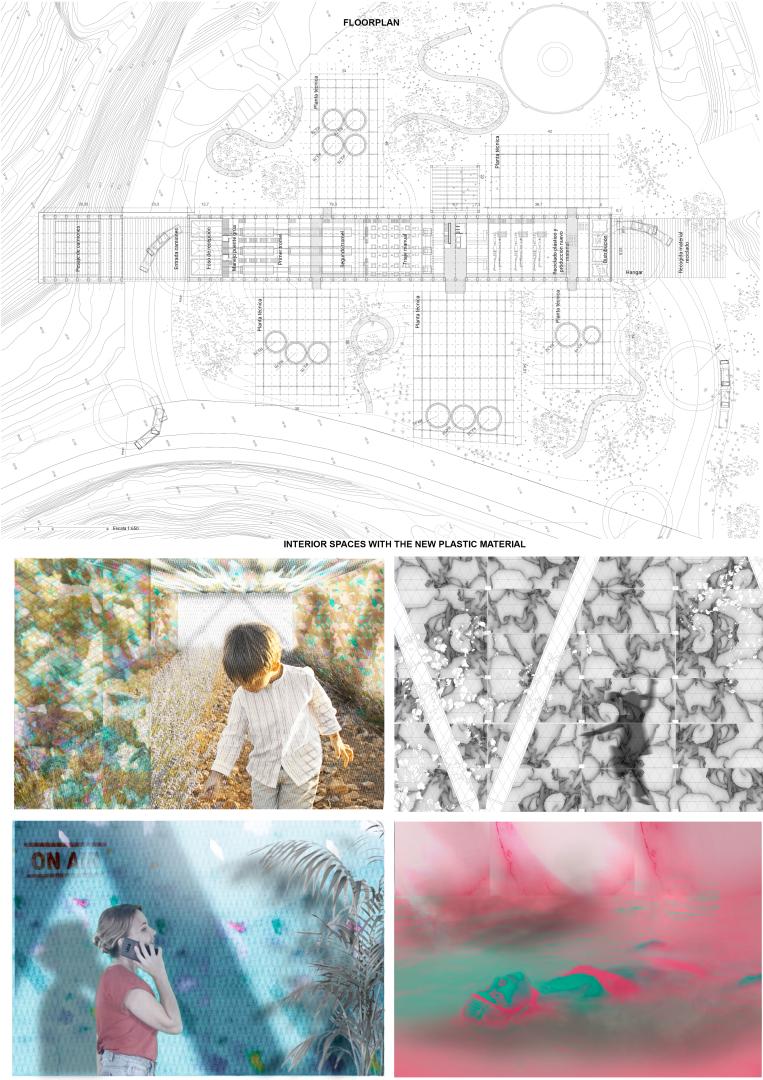Reliquia
Basic information
Project Title
Full project title
Category
Project Description
Have you ever imagined that your bottle of water can be part of the floor that you are standing on right now?
Did you ever thought that your leftovers in the restaurant will be used to create compost and harvest the fresh tomatoes you are eating right now?
All that and more is possible in this new building complex where all the waste is reused as soon as is created. We need to tackle waste production and find other sources of renewable energy
Geographical Scope
Project Region
Urban or rural issues
Physical or other transformations
EU Programme or fund
Which funds
Description of the project
Summary
The former cement factory “Rezola” located in San Sebastian, Spain, will soon close and end the production of cement. We were proposed by the Polytechnic University of Madrid, ETSAM, to give a new use to this building and surroundings.
First approach was to research which kind of infrastructure was necessary for the city. I came across with news about the new construction of an incineration plant really close to the city due to the incapability to process plastic waste. The whole city was against this idea so it was an opportunity to react against burning waste.
The concept was to carry out a project that functions as a waste sink, which reuses waste and generates a new architecture that attracts the public. In this way, leisure and industry are linked. “Reliquia” presents itself as a pioneering example and alternative to incineration.
Key objectives for sustainability
The innovation comes with the waste management and the transformation into new pieces. Waste management will be carried out through a series of machines in a longitudinal and gravitational arrangement. After that, the reuse of all plastic waste will be based on 4 actions:
The offer of leisure activities where the waste derived from these activities is collected at source transformed into a new material with which to create systematised construction elements.
The material formed by hot moulding has a high tensile strength, crack resistance and is a great insulator. After a process that emits neither water nor fumes, unique pieces are obtained due to its composition of different fragments.
A catalogue of systematised and standardised plastic construction systems were developed taking into account three rules: the inclusion in structural frames, their recycled materiality and dry joineries.
All these steps leads us to the design strategy for the project, it will be based on three actions
Reuse all existing concrete structures and recycle all steel elements. Secondly create a recycling plastic factory to process the waste of the city. The last step is to design new architecture around the factory with the recycled plastic.
The new leisure and recycling complex, located in the cement factory, aims to set a pioneering example and an alternative to plastic incineration.
In order to minimise the quantity of this waste and to make better use of it, a selective collection at source has been established. For this purpose, the concrete silo is used, where a prefabricated system is inserted in the upper area that supports the PVC pipes coloured according to the type of waste they transport. They will make daily collection much more cost and time efficient.
Key objectives for aesthetics and quality
In terms of construction, a catalogue of systematised and standardised plastic pieces is formed. All of them are derived from three rules, the inclusion in structural frames, their recycled materiality and the dry layout.
I will explain how some of the spaces inside the building will work not only from a technical point of view but also with the participation of the visitors.
The market:
The 1.50 by 1 by 0.20 hollow core element is reinforced with fibreglass to increase its strength. The composite slab is formed by the tongue and groove connection of these elements and an exposed finish. A concrete compression layer is not necessary, so it is possible to replace the element in case of deterioration.
The market activity that takes place on Tuesdays and Saturdays generates 100 kg of plastic waste, which makes it possible to form 6 bovedillla pieces.
The library:
Thanks to the combination of different densities of plastic enclosures it will be possible to glimpse the activities going on inside.
The external enclosure, a plastic mesh created by the extrusion of a flexible thread. This is woven into a structural frame that filters the light and captures the relative humidity of the environment.
A week of library activity generates around 250 kg of waste. It is possible to make up 12 interior enclosure slats or 30m2 of exterior enclosure mesh.
The urban vegetable garden and cafeteria:
The folding enclosure formed by moulding with dimensions of 1.75 x 4.00 x 0.05 and the extruded planter element with dimensions of 3 x 2x 0.90 are arranged with a dry joint.
The enclosure is formed by a stainless steel frame on a self-supporting triangular system. The prefabricated composite structure of the planter is suspended from the composite slab.
After the party held on the rooftop for the inauguration of the relic urban gardens, 300 kg of waste was collected. This was used to create new planters for module 5.
Key objectives for inclusion
The whole project only is possible with the help pf the users They will be aware of how much waste they produce and will be able to generate the new architecture. With the smart system designed for the building will be possible to reduce the CO2 emissions to transport the waste where it is produce to the outskirts of the city. It eill be recycled on site and therefore every element that gets ruined in the building can be replaced by introducing the old elements again into the cycle.
Physical or other transformations
Innovative character
The project only exist if we combine the three dimensions. We need to reduce the amount of waste, we will be able to build more affordable construction systems and the users will participate

